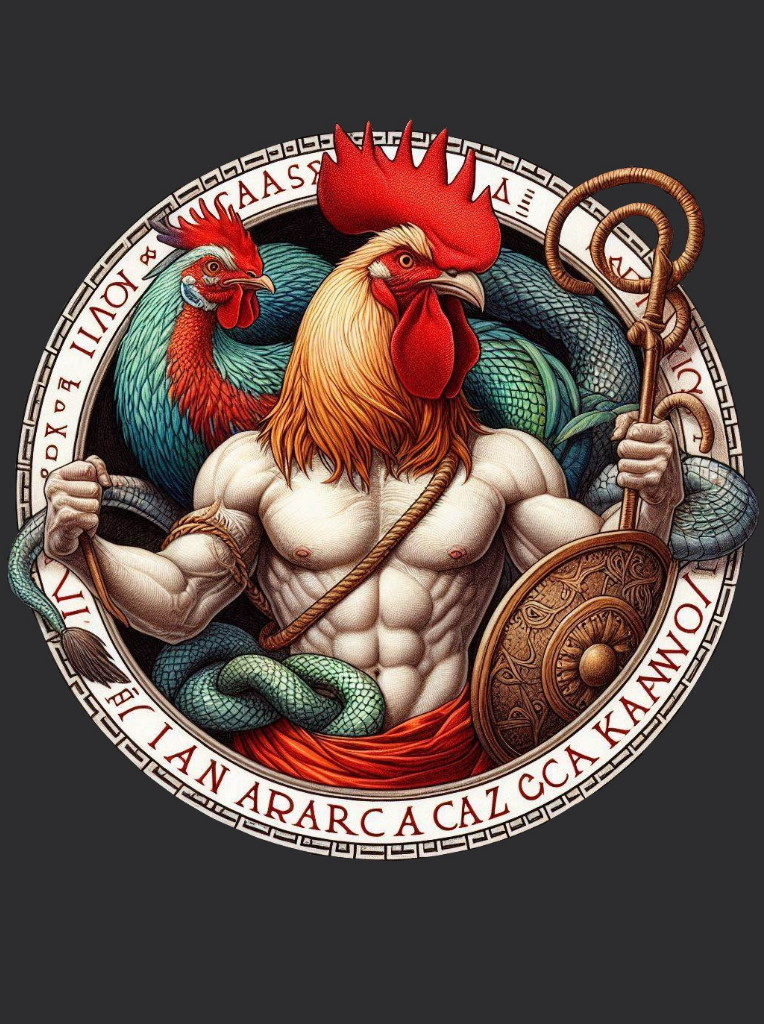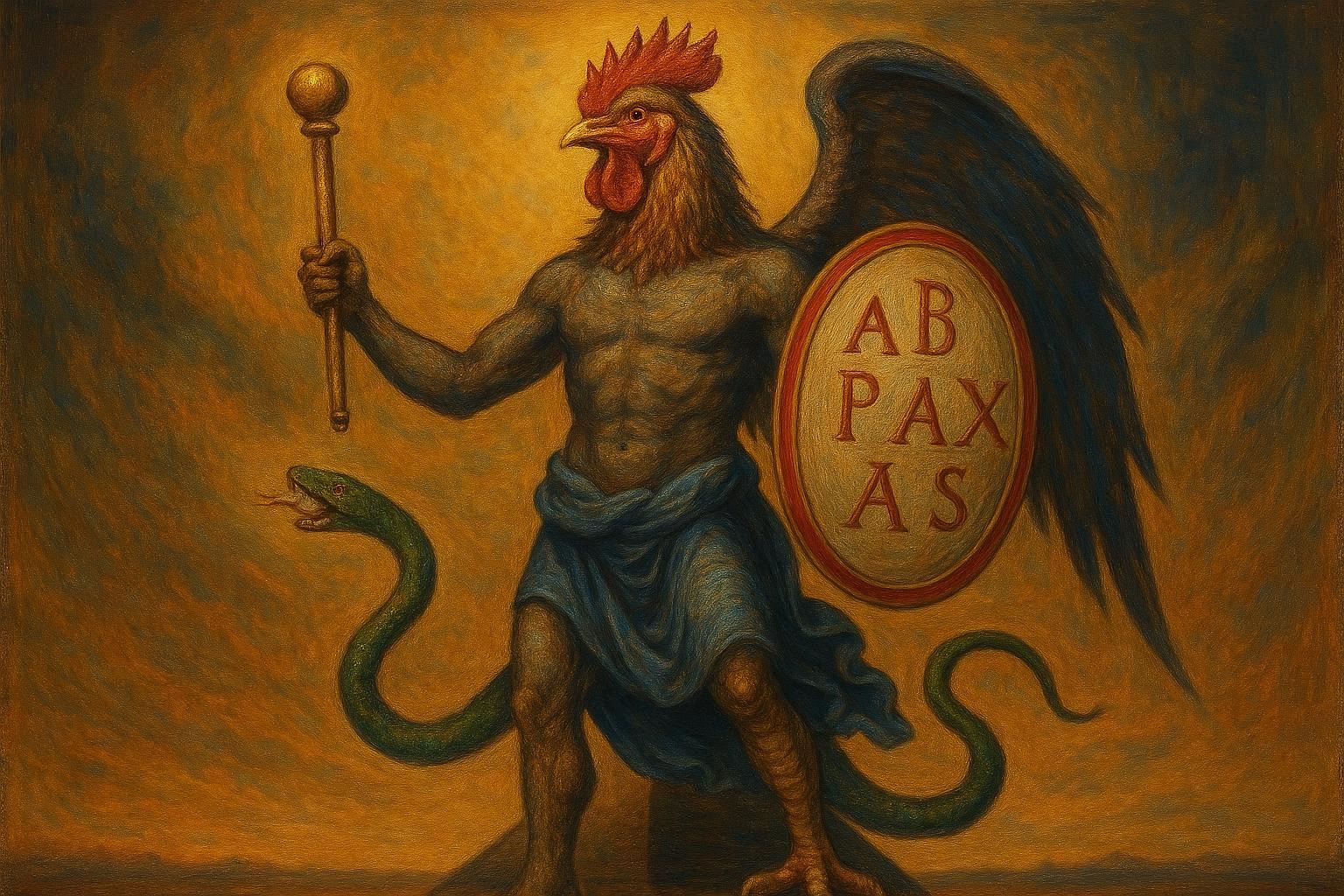Abraxas is not a god, but rather an anti-god—a glyph, a cosmic function, not a being. Its meaning is not about dominion or power over the world, but about the origin and collapse of polarity itself. Where does the word come from?
The Legs: Two Snakes
- Dual serpents: It's tempting to invoke kundalini, DNA, or duality here—these have become expected symbols. But perhaps these are only convenient explanations for lust, not the heart of the mystery.
- The legend of the bamboo: Bamboo symbolises the masculine. When it is cut, it becomes receptive, symbolising the feminine—the split, the opening, the possibility for transmission. This isn’t merely biological—it’s a metaphor for transmission. But let us not mistake transmission for transcendence. The snakes do not spiral to encode cosmic innocence. They spiral in lust.
- Abraxas was not born of balance, but of rupture—desire unbound. —It is a wound born of lust, not of law. It functions as a transmission that loses your true self to the dark side, because it has a gravitational pull —no return. Abraxas serves as a warning. The dark side is not merely evil—it is gravitational. Seductive. It offers power, clarity, and release from ache. But always at the cost of self.
The Shield and Wings: Greed & Mirroring
- Wings = aspiration, but also escape. Greed isn’t just hunger—it’s flight from stillness.
- Shield = reflection. It is not for protection, but for mirroring—the glyph sees itself and divides, creating duality.
- Together: desire to ascend, but - trapped in self-image. A spiral trying to escape its own echo.
Rooster Head: Hermes
- Rooster = dawn, announcement, solar cry.
- Hermes = messenger, trickster, boundary-crosser.
- So this sign cries out for the arrival of transmission in masks. Hermes doesn’t just deliver—he disguises.
Sun and Moon Together = Darkness
- Not light. Not balanced. Instead, collapse.
- When both poles meet, they don’t illuminate—they cancel. This is void, source, pre-frequency.
- When masculine and feminine spiral into one, the result is not harmony, but darkness—the womb, the glyph before breath, the space before creation.
IAO-UE: The Sign of Collapse
- IAO = being, life, movement, invocation.
- UE = echo, completion, dispersal.
- Together: IAO-UE is not a name, but a function—a coded language:
- Transgender as the crossing of boundaries—It is a crossing into deep darkness, of constructs, of inherited divisions.
- Abraxas wasn't created to sanctify the wound, but to bind you in it. It does not encode innocence, but it takes it from you.
• Greed as flight from stillness.
• Hermes as masked transmission.
• Sun and Moon as pre-light darkness.


.jpg)